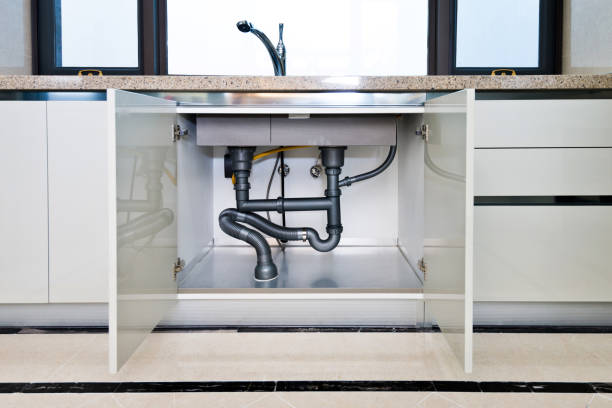Kitchen Sink Jetting or Rodding
We Offer Professional Kitchen Sink Jetting And Rodding Services To Keep Your Sinks And Drains Flowing Smoothly.
Kitchen Sink Jetting or Rodding Services In naperville, illinois
High-pressure hydro-jetting might be an excellent option for your home if you frequently suffer with unpleasant clogged drains. While hydro-jetting may sound like a thrilling water activity or an extreme method of more effectively carving stone, you might find it to be a little less thrilling(Except if you truly value a spotless drain line). One of the finest ways to unclog clogged drains, reduce persistent odors in your pipes, and maintain a clean drain system is hydro-jetting.
However, simply because hydro-jetting involves plumbing doesn’t make it dull.
Why Hydro-Jetting Is the Coolest Way To Clean Your Pipes
Before we get into how you can hydro-jet your clogged shower drain or your kitchen sink, let’s go over the basics. Hydro-jetting is the process of feeding. Your pipes are blasted with high-velocity water that is released from a pressured water hose until all of the accumulated muck and dirt dies.
In the plumbing industry, jetting as a whole was formerly seen as quite futuristic. The price of jetting equipment has, however, dropped. Hydro-jetting has increased in popularity over time. Water and sewer line clogs may now be cleaned and avoided by hydro-jetting, which can even stop tree roots from entering the pipes. That being said, hydro-jetting is probably not a good option if a tree root has already damaged your pipes. The best course of action in that situation is pipe replacement.

Kitchen Sink Jetting or Rodding
Is Hydro Jetting Preferable to Snaking?
Both snaking and hydro jetting clear basic clogs while also increasing drainage speeds. Hydro jetting, on the other hand, is a way to clean sewers that is more powerful and flexible. Hydro jetting not only gets rid of clogs, but it also cuts down on the grease and minerals that build up inside sewer lines over time.
Is Hydro Jetting a Good Investment?
Savings on costs? Of course. Hydro-jetting can be more expensive than regular drain cleaning services. However, in the long run, it will save you money. This method cleans the whole pipe, so you won’t have problems for years. It also saves you both time and money.
Is It Possible To Hydrojet A Sink?
The most serious risk of hydro-jetting a clogged sink drain, sewer line, or other pipes in your home is that too much pressurized water will crack the pipes. Any competent plumber will be able to safely hydro-jet your pipes with little to no risk to themselves, you, or your pipes.
What's The Distinction Between Snaking And Jetting?
Snaking uses a cable with an electric motor to push and pull the cable back, and you attach blades to the end. Hydro jetting uses a high-pressure water jet to blast through stubborn clogs, hardened debris, and even tree roots, and it can be very effective on cast iron build-up.
Can Hydro-jetting Cause Pipe Damage?
Unfortunately, sewer pipes do not last forever, and as they age, they become more prone to cracks and breakages. This means that pipes of a certain age and condition should not be hydro jetted because 4000 PSI of pressurized water could cause serious damage.
How Frequently Should You Use A Hydrojet?
Hydro jetting is a good preventive measure for keeping your sewer lines clean, and it should be done every 18-22 months.
Is Drain Jetting Effective?
When performed by a trained professional, hydro jetting can safely and effectively clear your pipes of debris, which not only improves water and waste flow but also increases the longevity of your pipes and lowers your water bills because your system is now more efficient.
Is Hydro Jetting Effective On Roots?
Hydro jetting is an excellent method for removing roots from pipes. The high-pressure water blast will force tree roots out of the pipes, breaking them down and flushing them out.
What Is The Process Of Hydro Jetting?
First, your plumber will inspect your system to determine the best location to insert a hose and start pumping water. Because of the high water pressure, the material clogging the pipes will be forced to flow down the sewer system and out of your home’s pipes.
What Is A Hydro Flush?
A flexible hose fitted with a special nozzle is used to spray a jet of highly pressurized water back and forth through pipes and sewer lines. It is a cleaning method for a building’s plumbing system that can:
• Remove grease
• Remove any remaining sludge and debris, as well as tree roots.


 Powered by
Powered by